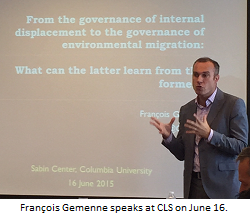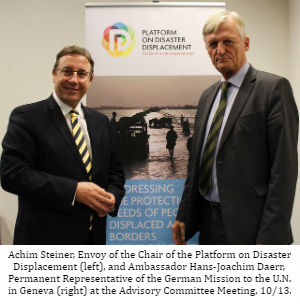 Nathan Utterback
Nathan Utterback
Sabin Center Summer Intern
Last month marked an important development in the UN’s process of identifying climate change goals and establishing an action plan for the near future. Committees of the UN Framework Convention on Climate Change (UNFCCC) met from June 1 through June 11 in Bonn, Germany to discuss implementation goals leading up to the UN Climate Change Conference in December, where many UN member states will decide how to best meet new emissions targets from 2020 onwards. This post summarizes the topics covered in the meeting, as well as provides the context for these topics within the UNFCCC timeline.
The UNFCCC was created in 1992 to deal with the increasingly important threat of climate change on an international scale. By 1997, the need for specific requirements and emissions targets became clear, and many countries adopted the Kyoto Protocol, which provided discrete goals for greenhouse gas reductions. Starting in 2008, the Kyoto Protocol specified commitment periods during which each country would have to meet certain increasing targets to help combat global warming. The current commitment period, which began in 2013, will end in 2020, and includes 38 countries comprising approximately 15% of total greenhouse gas emissions. After that point, new climate change targets and industrial and governmental commitments will be needed. Although the major decisions will be made this December in Paris, the meeting in Bonn was one in a series of meetings intended to lay the groundwork for the upcoming agreement, especially focusing on the importance of finance and disaster mitigation.
On the schedule for last month’s meeting were several workshops, dealing primarily with two major topics, mitigating the risk of natural disasters on a global scale and financing technologies and infrastructural improvements to promote climate change mitigation and adaptation. The Subsidiary Body for Scientific and Technological Advice (SBSTA) elaborated on the need for a comprehensive international early-warning system to detect and respond to environmental disasters caused by climate change. Particularly in the Pacific regions, international cooperation was mentioned as especially important to the survival and protection of small island nations. As weather patterns become less predictable over the next several decades, it will be necessary to develop and implement new methods for predicting floods, drought, and rapid desertification in order to deal with these threats before they cause irreparable harm.
Several committees, including the SBSTA, also discussed the importance of international climate finance. Several international banks and financial institutions presented statements on the feasibility of private investment in sustainable infrastructure and climate change resilience. Many of the private speakers at the conference advocated strategic partnerships between NGOs and large financial institutions, all within the larger oversight of the UNFCCC. Many climate-focused NGOs would benefit from sponsorship and investment from banks and investment funds, and the financial institutions would gain the benefit of asset diversification and the increased stability that comes with an effective response to climate change. Many of the banks and investment funds present at the meeting expressed an interest in clearer international pathways towards sustainable and resilient investment.
Although last month’s meeting was only a small step towards the final resolution planned for December, the progress that has already been achieved shows promise for a comprehensive climate change plan. Increasing resiliency efforts in the face of impending natural disasters and increased flooding is crucial to the international action plan to be drafted in Paris. Despite efforts to reduce greenhouse gas emissions, concerted international efforts will be also be required to finance sustainable infrastructure and adaptation projects. By combining the emissions targets to be agreed upon in Paris with comprehensive plans for climate change financing and disaster detection and mitigation, the efforts of this year could be a major step forward in addressing climate change.




